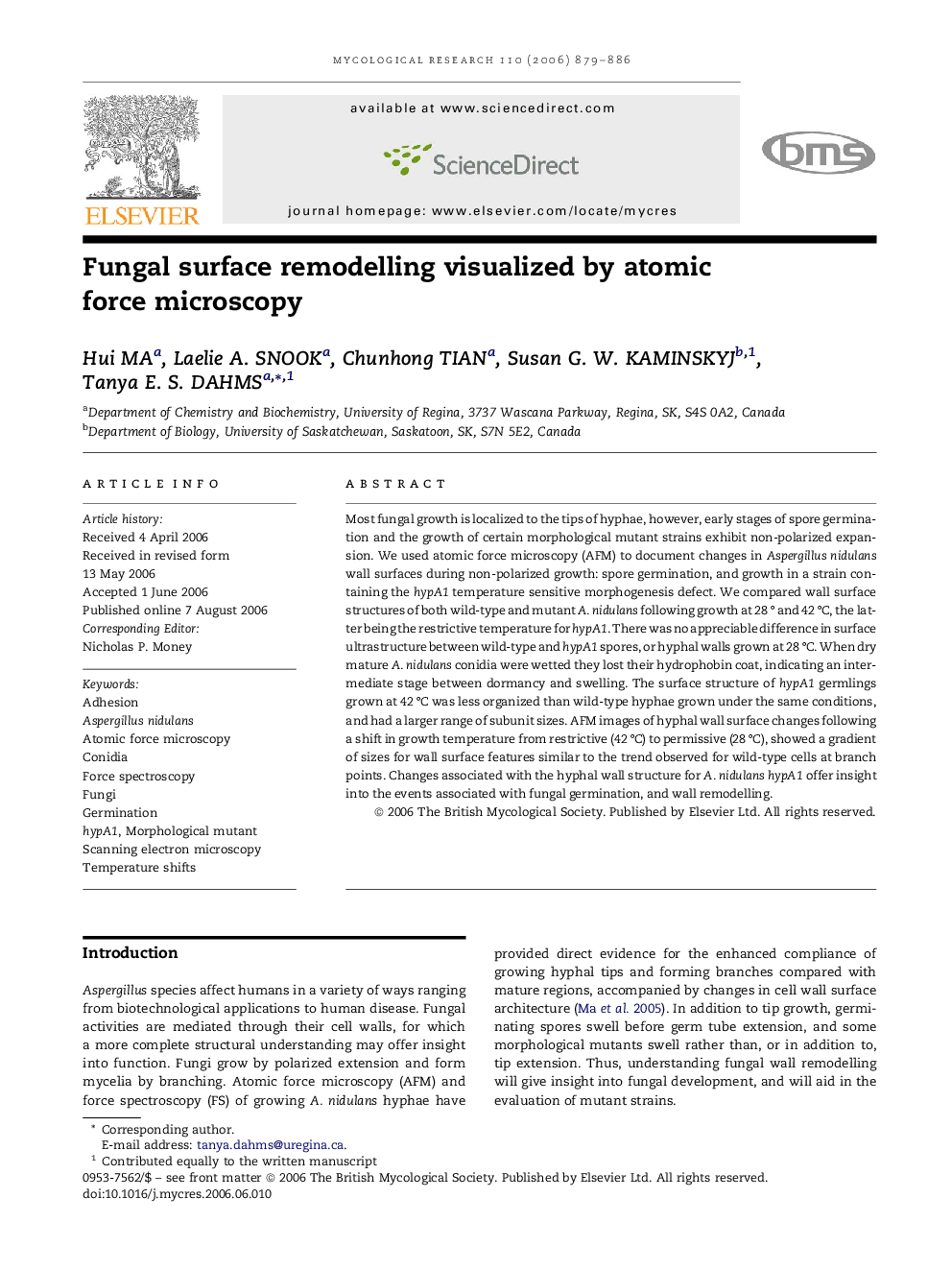| Article ID | Journal | Published Year | Pages | File Type |
|---|---|---|---|---|
| 4358122 | Mycological Research | 2006 | 8 Pages |
Abstract
Most fungal growth is localized to the tips of hyphae, however, early stages of spore germination and the growth of certain morphological mutant strains exhibit non-polarized expansion. We used atomic force microscopy (AFM) to document changes in Aspergillus nidulans wall surfaces during non-polarized growth: spore germination, and growth in a strain containing the hypA1 temperature sensitive morphogenesis defect. We compared wall surface structures of both wild-type and mutant A. nidulans following growth at 28 ° and 42 °C, the latter being the restrictive temperature for hypA1. There was no appreciable difference in surface ultrastructure between wild-type and hypA1 spores, or hyphal walls grown at 28 °C. When dry mature A. nidulans conidia were wetted they lost their hydrophobin coat, indicating an intermediate stage between dormancy and swelling. The surface structure of hypA1 germlings grown at 42 °C was less organized than wild-type hyphae grown under the same conditions, and had a larger range of subunit sizes. AFM images of hyphal wall surface changes following a shift in growth temperature from restrictive (42 °C) to permissive (28 °C), showed a gradient of sizes for wall surface features similar to the trend observed for wild-type cells at branch points. Changes associated with the hyphal wall structure for A. nidulans hypA1 offer insight into the events associated with fungal germination, and wall remodelling.
Keywords
Related Topics
Life Sciences
Agricultural and Biological Sciences
Agricultural and Biological Sciences (General)
Authors
Hui Ma, Laelie A. Snook, Chunhong Tian, Susan G.W. Kaminskyj, Tanya E.S. Dahms,
